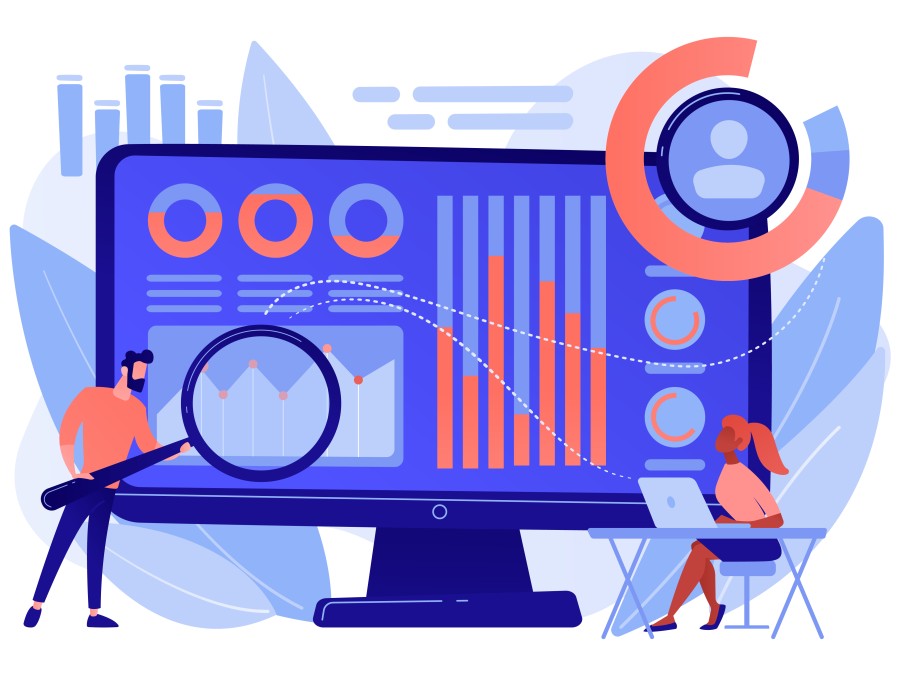In today's competitive business landscape, tracking and improving employee performance is essential for organizational success. Effective performance metrics provide valuable insights into employee productivity, engagement, and overall contribution to the company's goals. This article delves into the key performance metrics that matter and offers strategies to track and enhance employee outcomes.
Why Performance Metrics Matter ?
Performance metrics are quantitative measures to gauge an employee's efficiency, effectiveness, and overall organizational impact. These metrics are crucial for several reasons:
- Objective Evaluation: They provide an objective basis for evaluating employee performance, reducing biases and subjective judgments.
- Goal Alignment: Metrics help ensure employee activities align with organizational goals, promoting a unified direction.
- Employee Development: Identifying areas for improvement enables targeted development plans, enhancing skills and competencies.
- Motivation and Engagement: Clear performance expectations and regular feedback foster a motivated and engaged workforce.
- Decision Making: Data-driven insights from performance metrics inform strategic decisions regarding promotions, rewards, and resource allocation.
Key Performance Metrics to Track
1. Productivity Metrics
Productivity metrics measure the output of employees within a specific timeframe. These can include:
- Output per Hour: Measures the amount of work completed per hour.
- Task Completion Rate: Tracks the number of tasks completed within a set period.
- Project Milestones Achieved: Assesses progress on long-term projects by tracking milestones.
2. Quality Metrics
Quality metrics focus on the standard of work produced by employees. Key metrics include:
- Error Rate: Calculates the number of mistakes or defects in the work.
- Customer Satisfaction: Gauges customer feedback and satisfaction levels related to the employee's output.
- Compliance Rate: Measures adherence to company policies and industry regulations.
3. Efficiency Metrics
Efficiency metrics evaluate how resources are utilized to achieve goals. These include:
- Resource Utilization: Tracks the efficient use of tools, materials, and time.
- Cost Efficiency: Measures the cost incurred to produce a unit of output.
- Turnaround Time: Assesses the time taken to complete a task or project.
4. Engagement Metrics
Engagement metrics help understand employee commitment and involvement. Important metrics are:
- Employee Satisfaction Scores: Derived from surveys and feedback.
- Absenteeism Rate: Tracks the frequency and duration of employee absences.
- Employee Turnover Rate: Measures the rate at which employees leave the organization.
5. Learning and Development Metrics
These metrics focus on the growth and development of employees:
- Training Completion Rate: Tracks the percentage of completed training programs.
- Skill Acquisition: Measures the acquisition of new skills and competencies.
- Career Progression: Assesses the rate of promotions and internal job movements.
Strategies to Track Employee Performance
1. Implementing Performance Management Software
Using the top performance management system software India can streamline the tracking process by automating data collection, analysis, and reporting. Features to look for include:
- Customizable Dashboards: Tailor metrics to specific roles and departments.
- Real-Time Data: Access up-to-date performance data for timely decisions.
- Integration Capabilities: Sync with other HR and business systems for comprehensive analysis.
2. Setting SMART Goals
Ensure employee goals are Specific, Measurable, Achievable, Relevant, and Time-bound (SMART). This approach provides clear expectations and facilitates accurate performance tracking.
- Specific: Clearly define the expected outcomes.
- Measurable: Establish criteria to measure progress.
- Achievable: Set realistic and attainable goals.
- Relevant: Align goals with organizational objectives.
- Time-bound: Specify deadlines for goal achievement.
3. Regular Performance Reviews
Conduct regular performance reviews to provide constructive feedback and identify areas for improvement. Reviews should include:
- Self-Assessments: Allow employees to reflect on their performance.
- Peer Reviews: Incorporate feedback from colleagues and team members.
- Manager Assessments: Provide an objective evaluation from supervisors.
4. Continuous Feedback Mechanisms
Implement continuous feedback systems to offer real-time guidance and support. This can include:
- One-on-One Meetings: Schedule regular check-ins with employees.
- Instant Feedback Tools: Use software to provide immediate feedback on tasks and projects.
- Recognition Programs: Acknowledge and reward outstanding performance promptly.
Enhancing Employee Outcomes
1. Fostering a Culture of Continuous Improvement
Promote a culture where continuous improvement is encouraged and valued. This involves:
- Encouraging Innovation: Support creative problem-solving and new ideas.
- Learning Opportunities: Provide access to training, workshops, and courses.
- Open Communication: Maintain transparent communication channels for feedback and suggestions.
2. Aligning Individual and Organizational Goals
Ensure that employee goals are aligned with the broader objectives of the organization. This alignment can be achieved through:
- Goal Cascading: Break down organizational goals into specific, actionable tasks for employees.
- Collaborative Goal Setting: Involve employees in goal-setting to increase ownership and commitment.
- Performance Incentives: Link rewards and recognition to the achievement of aligned goals.
3. Utilizing Data-Driven Insights
Leverage data from performance metrics to make informed decisions. This includes:
- Identifying Trends: Analyze data to spot patterns and trends in performance.
- Predictive Analytics: Use historical data to forecast future performance and identify potential issues.
- Personalized Development Plans: Tailor development plans based on individual performance data and career aspirations.
4. Encouraging Work-Life Balance
Promote work-life balance to enhance employee well-being and productivity. Strategies include:
- Flexible Work Arrangements: Offer remote work options, flexible hours, and compressed workweeks.
- Wellness Programs: Implement programs that support physical and mental health.
- Time Management Training: Provide training on effective time management techniques.
Conclusion
Tracking and improving employee outcomes through effective performance metrics is vital for organizational success. Companies can gain valuable insights into employee performance by focusing on productivity, quality, efficiency, engagement, and development. Implementing strategies such as using the best performance software in India, setting SMART goals, conducting regular reviews, and fostering a culture of continuous improvement will drive better employee outcomes. Ultimately, these efforts lead to a more motivated, skilled, and productive workforce, contributing to the overall growth and success of the organization.





Comments